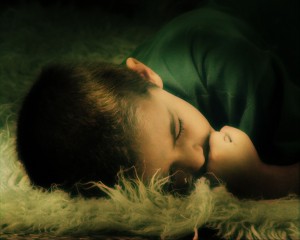 |
| Leaflet for "Schrei 27" |
On April 2011, Davide Pepe, known for his work with David Tibet/Current 93, but also accomplished independent filmmaker, previewed at the Barbican's Silk Street Theatre Schrei 27, inspired by the same titled radio work of Diamanda Galàs and created in collaboration with the singer.The movie will be worldly premiered on April 13, 2012 in Mexico City's Auditorio Del SME.
Schrei 27 was recorded originally in 1994 for a radio broadcast commissioned by the New American Radio and the Walker Art Center in Minneapolis (US). Schrei is a German word for shriek, and "is something that is involuntarily produced – it comes from the back of the throat – it's a sound that sounds extreme, it's a protracted sound that people would say sounds inhuman. It’s of such terror that it’s pushed out of the body", as Diamanda Galàs explains in interviews.
In Schrei 27 Artist statement, Galàs wrote "The piece Schrei 27 is a very violent piece psychologically. If a person is isolated too long from society with false promises of release which constantly are presented to demoralize her/him, a suicidal impulse starts and builds that becomes so strong that the day may be spent looking for ways to kill oneself."
Having as main issue torture in institutionalisation, and with the voice as the subject tortured, the work, subsequently issued by Mute on record along with Schrei X, a 1996 live performance at the NYC's Knitting Factory staged in complete darkness and in front of five microphones, Schrei 27 was finally developed as a quadrophonic installation in 2007, touring Spain and Canary Island.
 |
| Davide Pepe, "Little Boy" (2004) |
Final act of a feverish period in which the San Diego-born singer put on record, since the 1990s, as diverse works as the vocal part of the performances Plague Mass and Vena Cava, the collection of gospel and blues The Singer, and the collaboration with Led Zeppelin bassist John Paul Jones The Sporting Life, the two versions of Schrei are the final and, for the moment, her most extreme avant garde statement.
Even if breaking Galàs' career in pieces just to have a chronological articulation would be superficial, it is also true that between Schrei and 2003's Defixiones: Will and Testament on the Armenian genocide, Diamanda Galàs released and toured mostly with song cycles, leading to records as Malediction and Prayer, La Serpenta Canta and Guilty Guilty Guilty, while working on still unissued projects as Insekta and Nekropolis - see her 2003 interview with Edward Batchelder The Politics of Disquiet for further details.
Even if breaking Galàs' career in pieces just to have a chronological articulation would be superficial, it is also true that between Schrei and 2003's Defixiones: Will and Testament on the Armenian genocide, Diamanda Galàs released and toured mostly with song cycles, leading to records as Malediction and Prayer, La Serpenta Canta and Guilty Guilty Guilty, while working on still unissued projects as Insekta and Nekropolis - see her 2003 interview with Edward Batchelder The Politics of Disquiet for further details.
"I have had a dream of the voice as a protagonist, - says Diamanda Galàs in an interview with Leslie Deree - as a horrific vocal spine to a black screen of flickering images. I’ve wanted to do this for years, 20 if not more. And when I saw Davide’s film Little Boy I grabbed his hand and asked him to do Schrei. We discussed the idea that people should see what constitutes the singing of these sounds - the ribcage, the vocal chord.
 |
| Diamanda Galàs, "Schrei 27" |
A few times doctors have asked if they could see how the vocal chords work – to conduct a recording made with a rubber tube down my throat making the sounds I make. This is important. It explains why the voice is at the center – it’s ring modulated, distorted, delayed."
The visual part of Schrei 27 was developed by Davide Pepe. "I followed the sound vibrations to make the light and movement of the body follow Diamanda's voice perfectly. The sound part of Schrei 27 appeared as a film to me from the first time I heard it. [...]
After this first step we started to inspire each other, adding new stuff each time inside the film - Diamanda's paintings, my sounds, Robert Knoke and Jim Provenzano’s photos of Diamanda, Dave Hunt’s sounds and mix of a part of the work and so on.
Each time one of us was suggesting something there was a new addition from the other part. [...] I should say what is for me, the film Schrei 27, I would define it as just an incredible short circuit between Diamanda and me."
Since during last 2011 Diamanda Galàs worked also with Soviet dissident artist Vladislav Shabalin for "Aquarium", a sound installation inspired by the environmental disaster in the Gulf of Mexico, we expect for further, interesting developments in this new direction.











